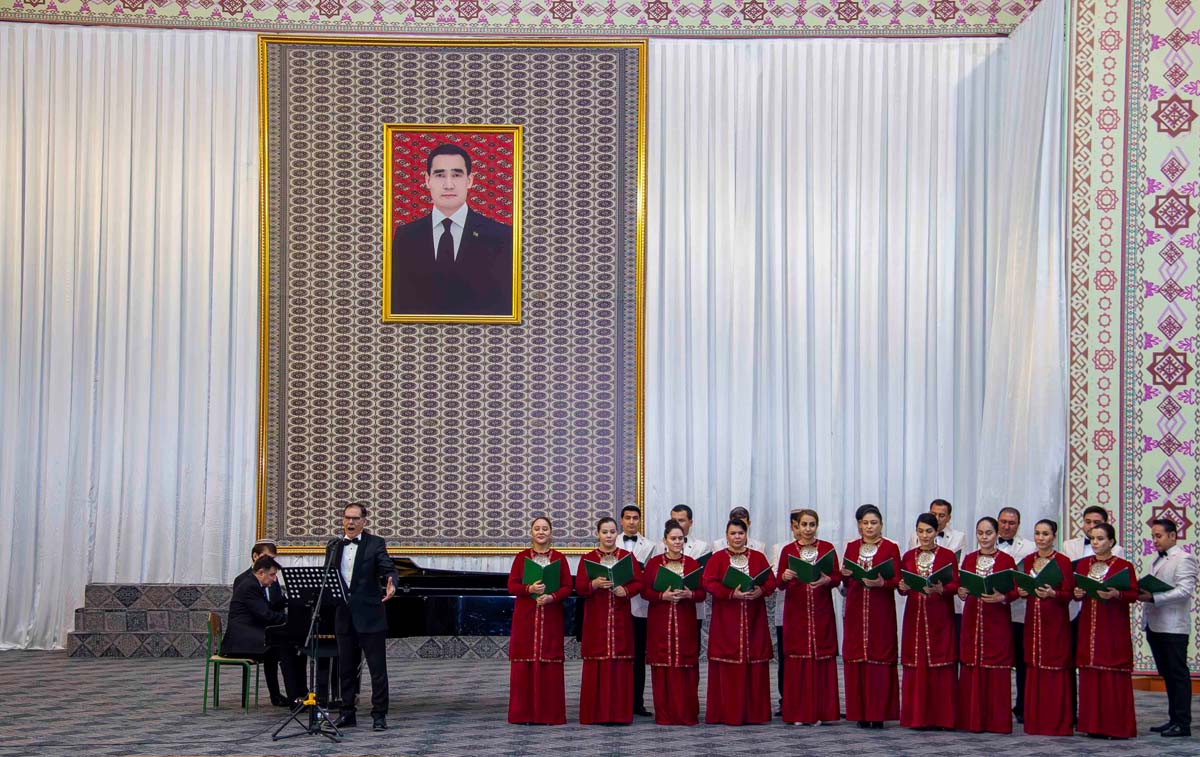An exhibition of Turkmen artists' watercolor works unveiled at the State Museum of Fine Arts. Watercolor is a type of painting based on paint, water and glue, which, when mastered by an artist, gives an effect of transparency, airiness and freshness. However, after visiting the exhibition, we learned many new and interesting things about watercolor.

The exhibition opened with the most striking display of paintings by artist Nurberdi Annagurbanov. It attracted visitors, inspired them, and prompted them to share their impressions. Particularly impressive was the painting "Continuity," depicting a grandfather with his granddaughter. The grandfather is rendered in black and white, while the granddaughter is in color.

"Many times people have wanted to buy this painting, but I decided not to part with it," says Nurberdi.

The painting "A Glance from the Past" is mesmerizing, with a charismatic elder looking at the viewers with a disarming sharp gaze, confirming that "the East is a delicate matter."

"Watercolor educates the artist," Nurberdi characterizes this type of painting. "Anyone can be taught to paint with oil, but watercolor loves a calm, balanced artist. Only such a master can create a pure, transparent and juicy painting."
In Merdan Kakabayev's exposition, we were most impressed by the still lifes with colorful melons.

"For me, watercolor is enemy number one," Merdan Kakabayev continues the conversation about this type of painting, "and to defeat an enemy, you need to know it well. In watercolor, you can't make mistakes; if you do, you have to start over. By nature, I am an explosive person, so I have been fighting with watercolor for a long time, with varying success. But among my students at the Turkmen State Art School, there are three who find watercolor very easy."

Still lifes of the Honored Artist of Turkmenistan Azat Annaev attract attention with the clear forms of objects. To achieve this effect, multilayering of watercolor and a lot of perseverance are used. His painting "Flower" impresses with its tenderness and fine, clear drawing.

In Larisa Fomina's composition, we were most taken by the work "Windsurfing." The sunset painted the waves of the Caspian Sea in a crimson color, among which a brave swimmer on a small wooden platform with a sail battles the mesmerizing danger of the sea element.
"I have been painting with watercolor since childhood," Larisa says. "This painting was created by me in 2014 during the stage of the Windsurfing World Cup held in Avaza."

Yulia Muradova, a student of the "Radoguna" school-studio, amazed everyone with her landscapes of Ashgabat. This exposition could be called "Falling in Love with Ashgabat," if not for some very cute animalistic paintings.
"With such watercolor, are you planning to enter an art school or directly the Academy of Arts?" we asked her.

"I haven't decided on a profession yet," she surprised us with an unexpected answer. And this is despite such success in watercolor!
People's Artist of Turkmenistan Ovezmukhammet Mametnurov presented in his exposition watercolor works from the 1970s to the present day. The landscapes of the Baikal-Amur Mainline were particularly attractive, with watercolor conveying the frosty air down to -40 degrees.
Makhym Ataeva, a student of the State Academy of Arts, in her painting "Memory," told about her mother through her belongings stored in a suitcase. One can only guess how many emotions Makhym experienced while creating this painting.
In the exposition of paintings by Nazik Polatova, three paintings on the theme of Ashgabat in evening lights were memorable.
The exhibition expanded the range of knowledge about the possibilities of watercolor and also showcased the best paintings created by Turkmen artists in this type of painting.









